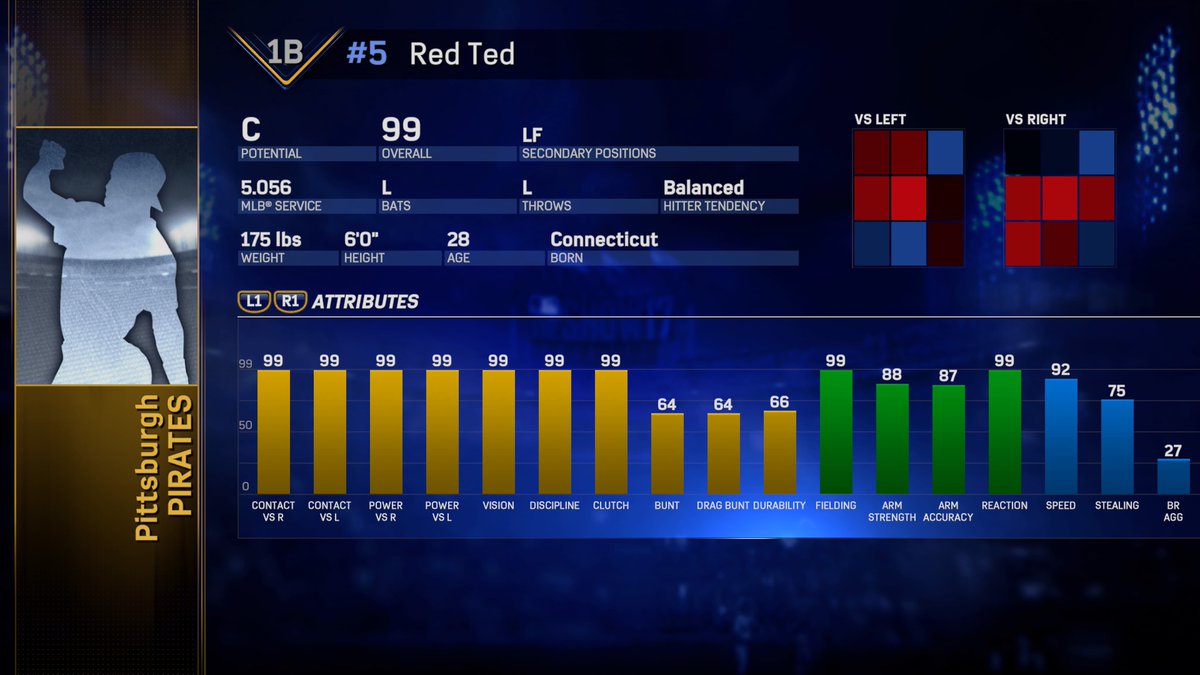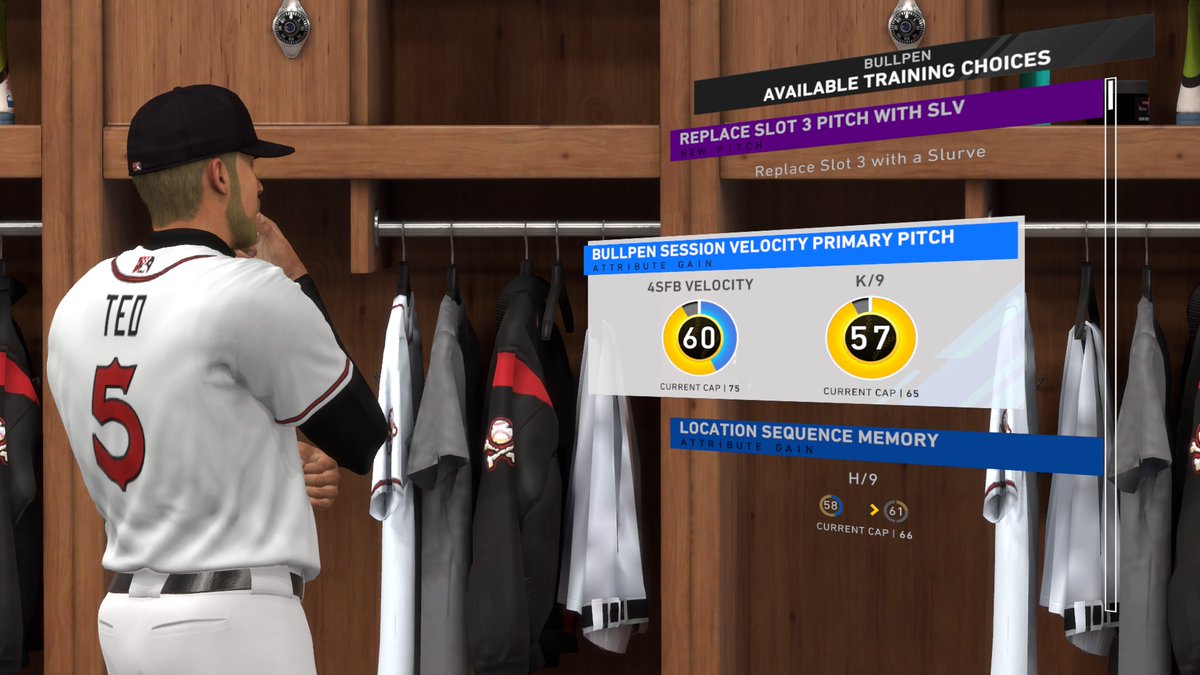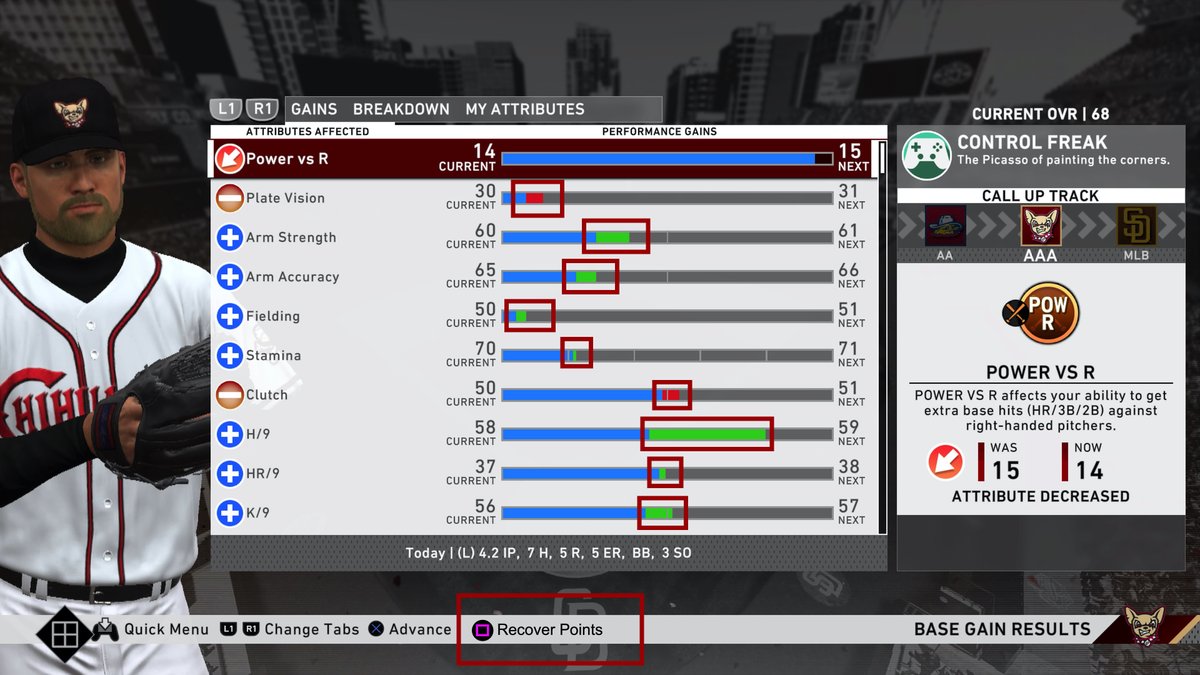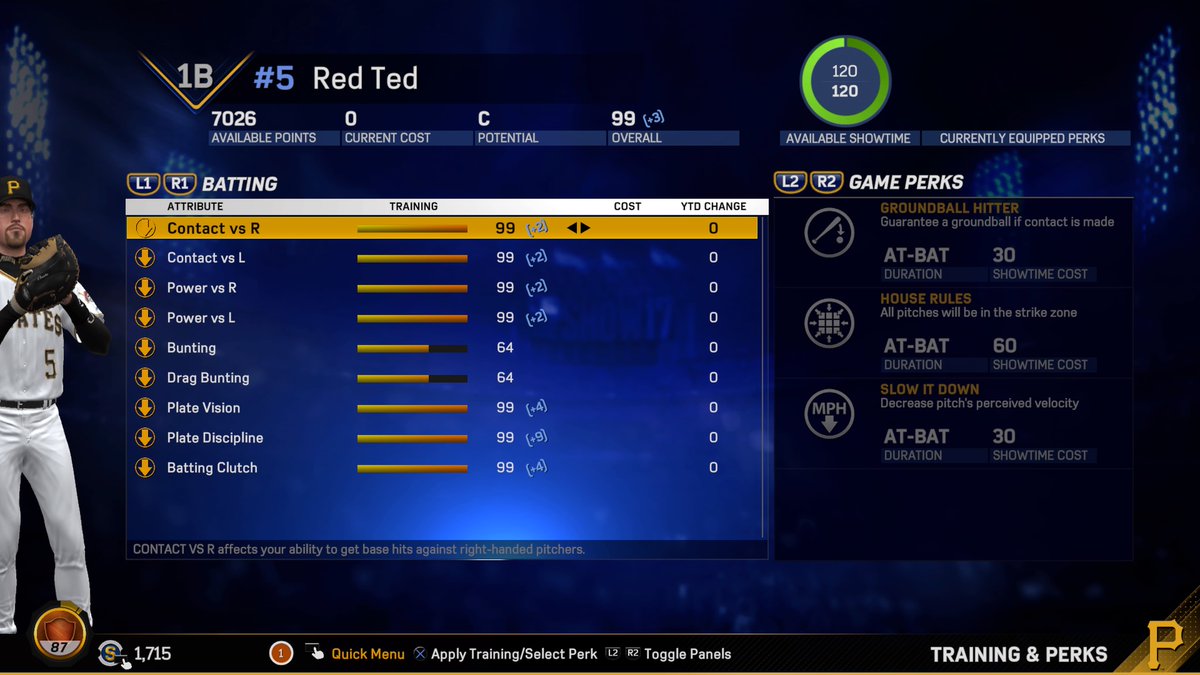MLB (Road to) The Show attribute progression
Two key features of MLB The Show’s career mode have each divided its player base in two; satisfying one group of its users while alienating the other.
This first of two posts focuses on one of those features - the mode’s core feature of attribute progression. The proposed change will keep both groups of users satisfied without compromising the integrity of the mode.
RPGs infiltrate the sport genre with career modes
First introduced in MLB 07 The Show, Road to the Show (RTTS) is MLB The Show’s role-playing game (RPG) mode, which in sport games is often called career mode. We control a single character, whose existence (behaviours, skills and appearance) in its world is determined by a set of (mostly) numeric attributes. As the puppeteer of that character (and no other in the world) the attribute values are in our hands.
It’s a difficult undertaking in sports games to implement a team-based career mode. Maintaining a balance between realism and keeping the player engaged requires a whole other way of ‘bringing the game to the player’. Imagine controlling a soccer (football) goalkeeper during a game in which the ball is at the other end of the field for 60 minutes!
Each game handles this dilemma in its own way. If implemented correctly, the game is indeed ‘brought to the player’ to minimise time spent waiting for their turn. The concept of a career mode lends itself especially well to a sport like baseball, where ‘your turn’ comes around, as either a pitcher, batter or fielder.
2018: The (sudden) evolution of Road to the Show
Bewilderingly, in an industry (especially within the sports genre, and even within The Show itself) in which micro-transactions have become an essential source of a game’s revenue, the ability to purchase points was removed from the RTTS mode in MLB The Show 18. The decision to do this may have been a result of it not fitting in with the dramatic change in direction the mode took to give it an extra dose of realism.
For 11 years we were in complete control of our road to the show, and many of us were fine with that. Each play earned points. Extra training opportunities earned extra points. We allocated those points to the attributes of our choice and could manipulate those numeric attributes to the extent that creating a god of a ballplayer was a very real option. We could even purchase points (via stubs purchases) using our real money via micro-transactions.
That all changed in 18. The changes made to the mode prevented the creation of a baseball god by removing the opportunity to allocate those hard-earned (or hard-bought) points to our choice of attributes, with the game instead allocating the points to those attributes that were employed during each play. A strikeout increased your Ks per 9, and a home run off a southpaw saw your Power vs Lefties increase. Training focused on related attributes: weight training improved your power; a massage improved your durability.
In other words, you were no longer in control of an RTTS god, you were in control of a regular human.
A fanbase divided
This new system has divided the Road to the Show fanbase into those that yearn for the RTTS of old, and those that appreciate the realism.
Those who yearn see the changes to progression as a removal of a key feature that made the mode so appealing - choice. More specifically, the freedom to choose which skill attributes to increase to suit their play style.
The use of archetypes in the new RTTS was the compromise on offer here and the removal of max caps in The Show 19 was another compromise. Speak to those who want to create a god though, and they’ll tell you it’s not the same, and it doesn’t even come close.
I never liked the idea of artificially tuning my player into a god. There’s nothing more satisfying than levelling up through hard work and earning my place in the ranks. If I hit a home run, I want it to be because I wrapped the barrel of the bat around the leather at 100mph, not because I have inflated my Power attribute with points I earned from routine fielding. I don’t mind being benched for batting below the Mendoza line. I use it as a reminder that I need to be more in control of my at-bats. The number of times I’ve grounded out after whispering over and over ‘don’t swing at the first pitch’ is embarrassing.
So naturally like others who appreciate the realism it offers, I’m in favour of the post-18 progression system. But some people aren’t and I respect that.
Why not have it both ways?
Unless multiplayer is likely in RTTS’s future, there is no reason (apart from a little development time required to implement this) to not let us decide how to allocate points, to cater for both gods and realists. Both markets can be appeased with a ‘god mode’ toggle button when creating the player initially. Toggle on for choosing how to allocate points, toggle off (default) for allocating points according to how they were earned (the present system).
The complexity of this depends on (and I’m going to get a bit technical here) whether the earned points are presently credited to attributes in real time (after each play) or as a batch process (after each game):
- If it’s real time as I suspect it is then that would (assumedly) require a redesign of the post-play sequence of tasks which, if written efficiently, would presently be a call to a separate procedure that modifies the attributes that changed in the play (eg K/9+ or PVIS-). This ‘attribute changing’ procedure could be rewritten so that instead of adding the points to the player’s base attributes immediately after the play they are held in an ‘attribute purgatory’ - an array (one space for each attribute) to store the anticipated changes until the end of the game.
- If it’s an end-of-game batch process it probably already holds the points in an array as described above or something similar. This is unlikely as it is more complex.
Either way, the post-game screen that shows your attribute changes could have a simple ‘recover earned points’ option if the ‘god mode’ toggle is on, which assigns the points to the user’s unused point bank instead of the attributes.
We could then in our player’s attribute screen assign points from the bank to the attributes of our choosing, in the same way we could prior to 18. Furthermore, larger chunks of points could also be spent increasing an attribute’s cap (which should remain even in god mode to prevent an attribute exceeding its cap, that way the mode's cap training sessions are still relevant).
A win-win-win
This solution meets the needs of those who want to create a god and those who prefer the mode to be more real. It also provides Sony with the ability to reinstate micro-transactions to the RTTS mode, which could potentially recoup the resources required to make the change with purchases of points.
I get that this isn’t a quick fix (although as I was breaking down the design I realised it is actually quicker than I expected). It is however a viable step closer to keeping on board the loyalists of the old RTTS ways.







Comments
Post a Comment